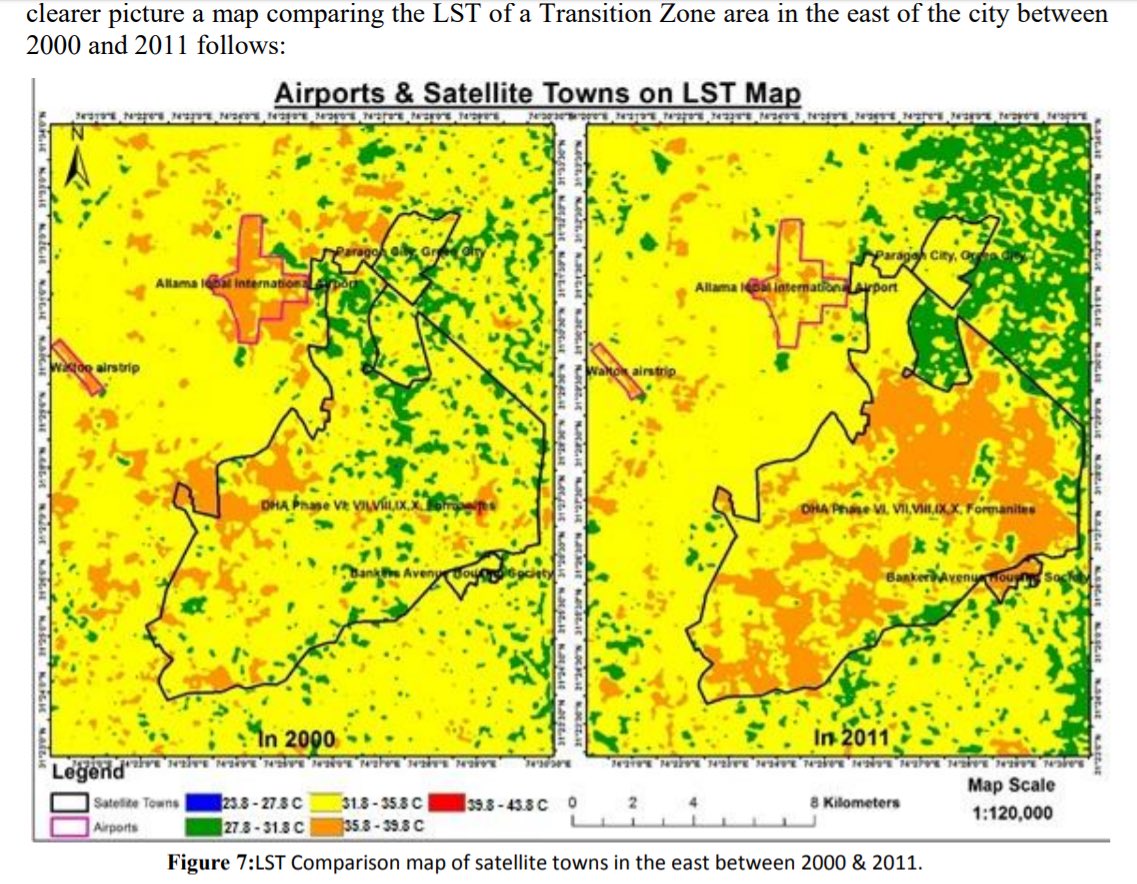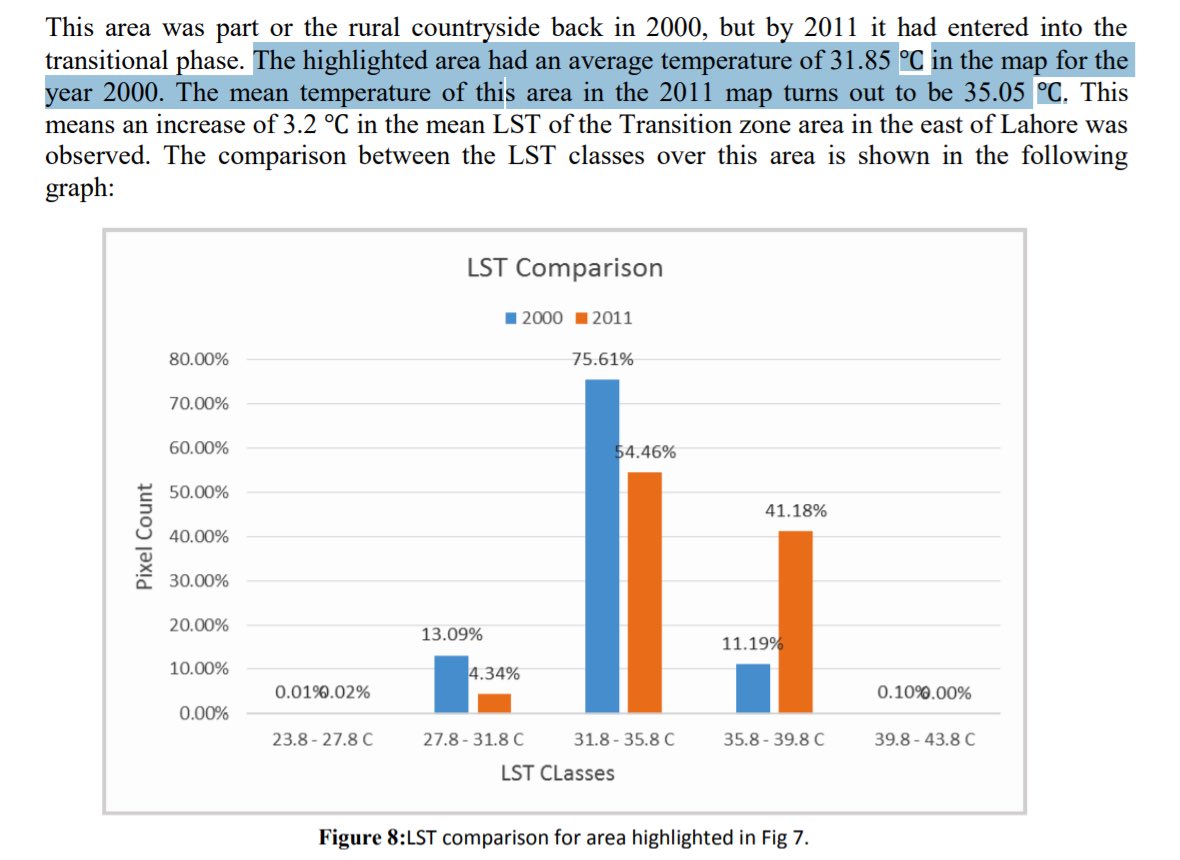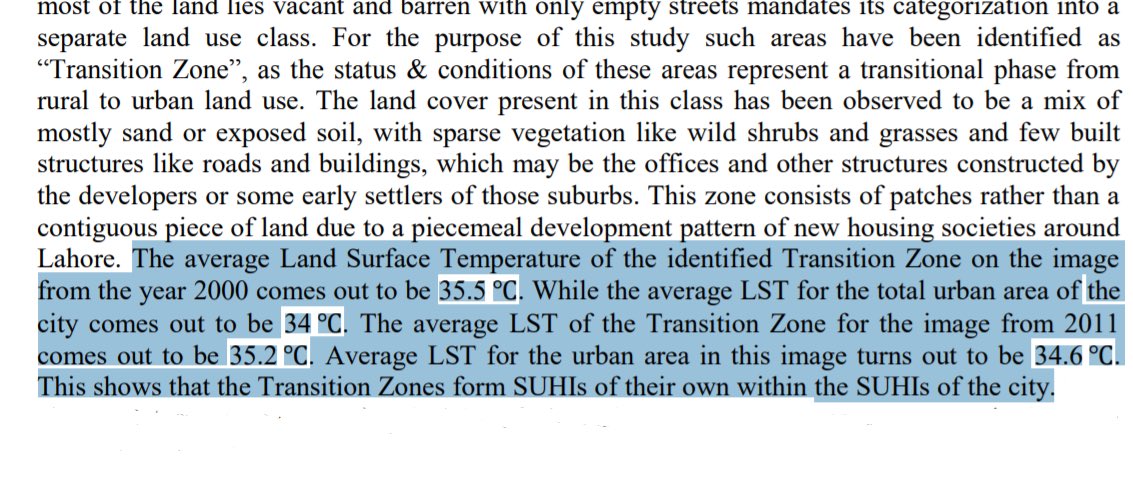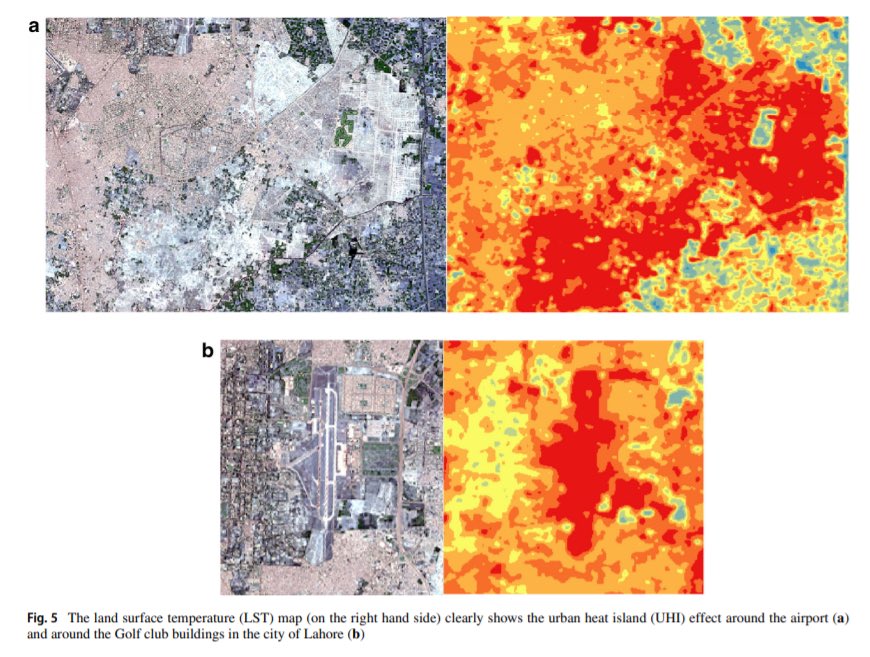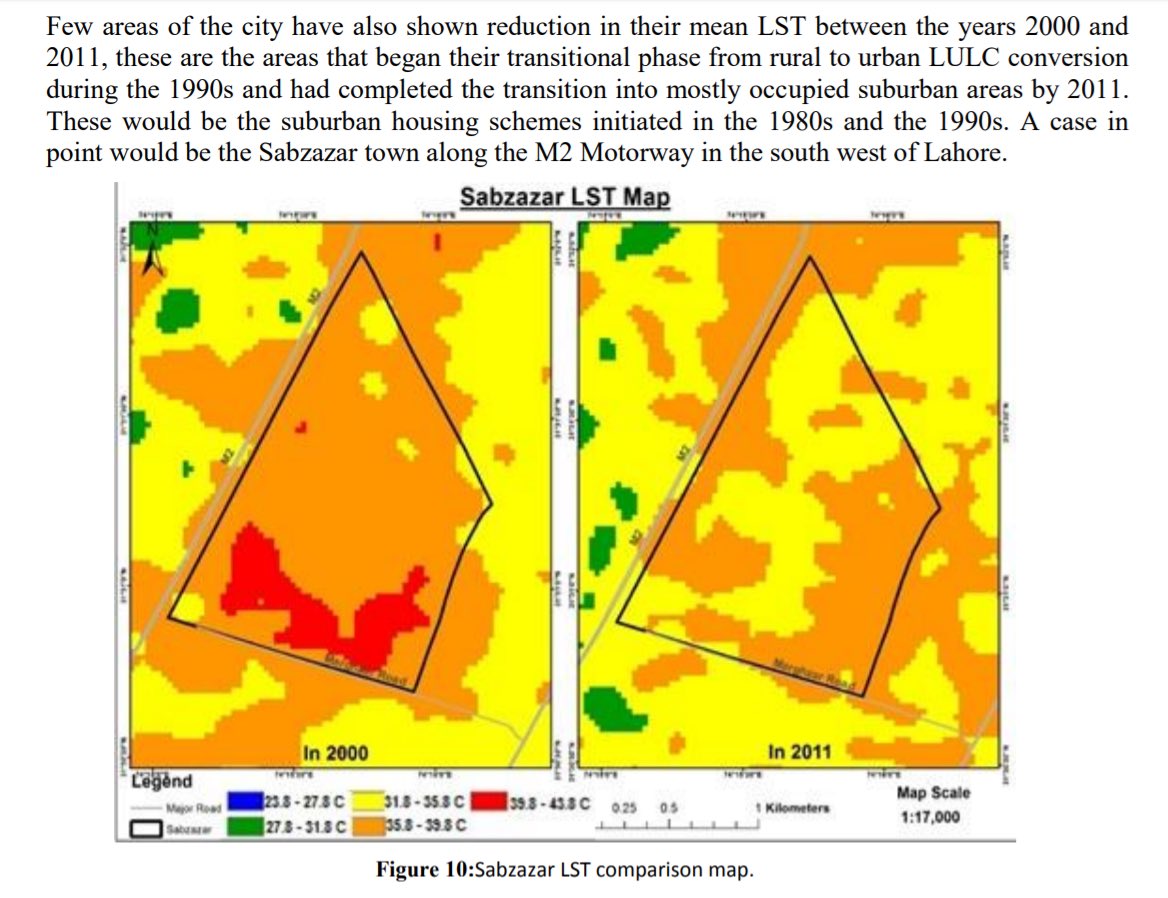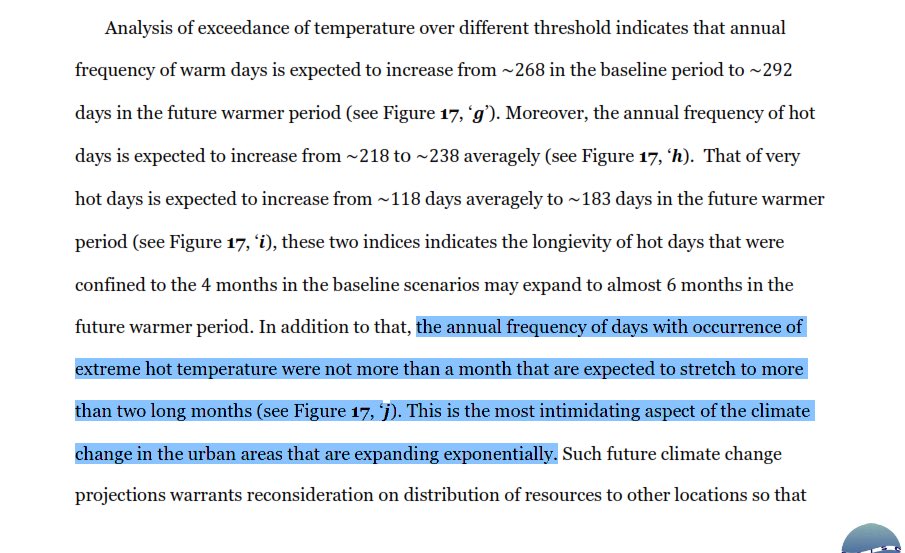Lahore's mean Surface Urban Heat Island (SUHI) effect, according to a 2020 study, was estimated to be 4.8 °C in 2016. Another 2015 study, estimated that in 2000, the mean SUHI was 1.7 °C.
So, yes, anyone who estimates it to be 2-3 °C higher over the decades is correct. But... https://twitter.com/thelahorewala/status/1285973487341928448
So, yes, anyone who estimates it to be 2-3 °C higher over the decades is correct. But... https://twitter.com/thelahorewala/status/1285973487341928448
While there indeed is a strong relationship with urban vegetation (~9% decrease based on NDVI changes, 1996-2016), a significant increase in mean SUHI has been caused by Land-use/Land-class "transition" driven by Housing (or horizontal sprawl).
Unlike cities elsewhere, where...
Unlike cities elsewhere, where...
SUHI is centered in the "Core" of the city, which in Lahore's case is Main Boulevard/Jail rd/Mall rd, here the effect is most notable in *new* multiple cores which developed in the last 2 decades as well as peripheries of the city, which are currently undergoing "transition"..
The "Transition phase" is particularly troubling, because much like built-up areas (high heat absorption+storage), the conversion of land into Vacant plots and roads, waiting for Houses to be built, results in a high temperatures. Remember the empty new DHAs and Bahria phases...
In the short-term:
- SUHI effect will become more intense, due to increasing LST mean with more horizontal sprawl
- Old cores of the city, like Mall road and Model Town, appear cooler not just comparatively, but they also become cooler because their "transition" has concluded
- SUHI effect will become more intense, due to increasing LST mean with more horizontal sprawl
- Old cores of the city, like Mall road and Model Town, appear cooler not just comparatively, but they also become cooler because their "transition" has concluded

 Read on Twitter
Read on Twitter
